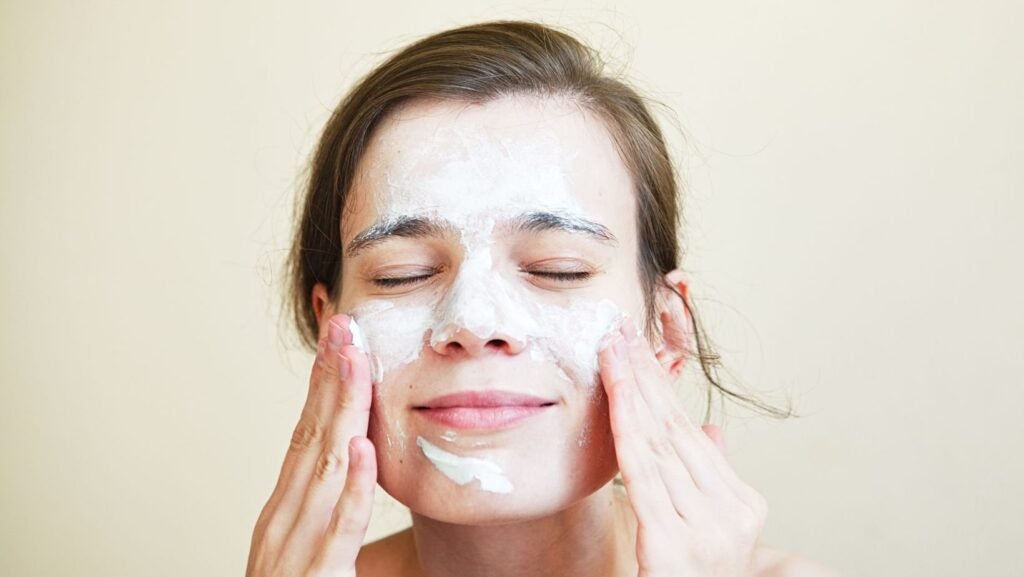Unlocking the Power of Sunscreen: Your Skin’s Best Friend

As we bask in the warmth of the sun’s rays, Sunscreen, Your skin’s best friend it’s essential to remember the importance of shielding our skin from harmful ultraviolet (UV) radiation. Sunscreen is our skin’s best defense against the sun’s damaging effects, and understanding its significance is crucial for maintaining healthy, radiant skin.
A Brief History of Sun Protection
Ancient civilizations recognized the need for sun protection, using natural substances like rice bran and red ochre to safeguard their skin. Fast forward to the 20th century, and the development of commercial sunscreens revolutionized skin care. Today, we enjoy a vast array of sunscreens, each offering unique benefits and protection levels.
The Science Behind Sunscreen
Sunscreens has active ingredients that Soak up or Meditate UV radiation, Foiling it from penetrating the skin. Physical sunscreens, that are zinc oxide and titanium dioxide, create a physical barrier, while chemical sunscreens absorb UV rays and transform them into heat, which is subsequently released from the skin.
Why Sunscreen Matters
Sunscreens offer numerous benefits, including:
– Skin cancer prevention
– Anti-aging properties
– Sunburn prevention
– Sensitive skin protection
Tips for Effective Sunscreen Use
· Firstly, Try to Choose a broad-spectrum sunscreen with a minimum SPF of 30.
·Secondly, then Apply generously 15-30 minutes before sun exposure.
·Thirdly, Reapply every two hours or immediately after swimming or sweating.
· Forthly, Don’t forget to cover commonly overlooked areas such as the ears, nose, and toes!
Chemical absorbents:
Active Ingredients:
1.Chemical Filters:
These substances absorb UV radiation and transform it into heat, which is subsequently released from the skin. Common chemical filters include Avobenzone, octinoxate, oxybenzone, homosalate, and octocrylene.
2.Physical or Mineral Filters:
These create a barrier on the skin’s surface that reflects and scatters UV radiation. Common physical filters include zinc oxide and titanium dioxide.
Inactive Ingredients:
1. Emollients:
Although, These are ingredients that moisturize and soften the skin by forming a protective barrier that helps to retain moisture. Also, Common emollients include shea butter, glycerin, lanolin, and various oils such as coconut oil and jojoba oil.
2. Thickeners:
These help give sunscreen its desired texture and evenness. Examples include various waxes, gums, and polymers.
3. Preservatives:
These are included to prevent microbial growth and extend the product’s shelf life. Common preservatives include Methyl Ester and phenoxyethanol.
4. Fragrances:
These are added to improve the scent of the sunscreen and increase the user experience. However, fragrance-free options are accessible for those with sensitive skin.
5. Antioxidants:
Some sunscreens consist of antioxidants such as vitamin E or Green tea extracts, which help to safe the skin from UV rays which caused of radical damage.
6. Other Additives:
These may include balsamic to retain moisture, oily substance like aloe Vera, and skin-conditioning agents like glycerin.
Sunscreen typically contains a varies of active and inactive ingredients designed to protect the skin from the harmful effects of ultraviolet (UV) radiation. The active ingredients in sunscreen can be mineral-based (physical blockers) or chemical-based (chemical absorbents).
Common active ingredients include:
Physical blockers: These ingredients physically block or reflect UV radiation away from the skin.
- Zinc oxide
- Titanium dioxide
These components absorb UV radiation and transform it into heat, which is subsequently Emit from the skin.
- Avobenzone
- Octocrylene
- Octinoxate
- Oxybenzone
- Homosalate
In addition to these active ingredients, sunscreens may contain other components such as:
- Emollients and moisturizers: These help to keep the skin hydrated and prevent it from drying out.
- Preservatives: Also prevent the growth of bacteria and fungi in the sunscreen.
- Fragrances: are sometimes added to improve the scent of the sunscreen.
- Antioxidants: Antioxidants are substances that inhibit oxidation, which is a chemical reaction that can produce free radicals, leading to chain reactions that may damage cells.
- Thickeners and stabilizers: These help to give the sunscreen its yearn for texture and makesure that the active ingredients stay unchanged over time.
- Water-resistance agents: These ingredients make the sunscreen more impervious to being washed off by sweat or water.
How Does Sunscreen Work?
Sunscreen works by either absorbing, reflecting, or provide protection against the sun’s UV radiation.
There are two main types of sunscreen based on how they achieve this:
Chemical Sunscreens:
Chemical sunscreens absorb UV radiation, preventing it from penetrating the skin. Organic (carbon-based) compounds such as oxybenzone, avobenzone, octinoxate, and octisalate, among others, make up these sunscreens. They absorb UV rays and convert them into heat, which the skin then releases.
Physical or Mineral Sunscreens:
Physical or mineral sunscreens use inorganic elements, such as zinc oxide, to create a physical barrier on the skin that diffuses UV rays.
Different Types of UV Radiation UV radiation is categorized into three primary types:
- 1.UVA: These rays penetrate deeply into the skin, leading to skin aging and wrinkling. Ultra voilet rays are also linked to a higher chance of skin cancer.
- 2.UVB: Also primarily affect the outer layers of the skin and are the main cause of sunburn. UVB rays also increase skin the cancer chance.
- The Earth’s atmosphere absorbs UVC rays, preventing them from reaching the surface.
Broad-Spectrum Protection a good sunscreen should provide broad-spectrum prevention, meaning it literally protects against both UVA and UVB radiation.
Water Resistance Water-resistant sunsblocks provide prevention while swimming or sweating, but they still need to be recall after a certain amount of time, as designate on the product label.
Conclusion
Hence, In the conclusion, Sunscreens are our skin’s ultimate guardian, shielding us from the sun’s harmful rays. By understanding the history, science, and benefits of sunscreen, so in this way, we can enjoy the sunshine with confidence. Embrace the sun, and let sunscreen be your skin’s best friend!
